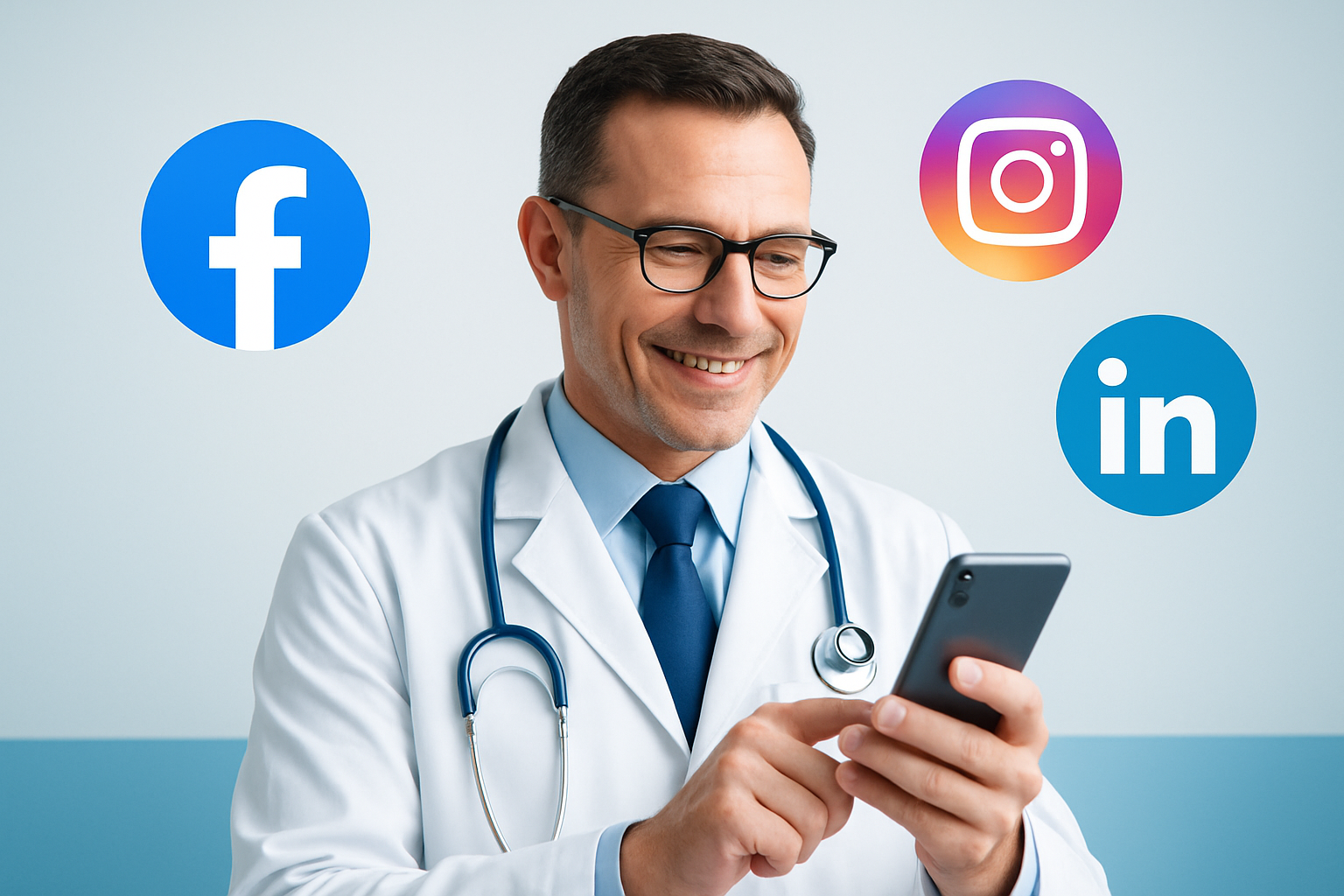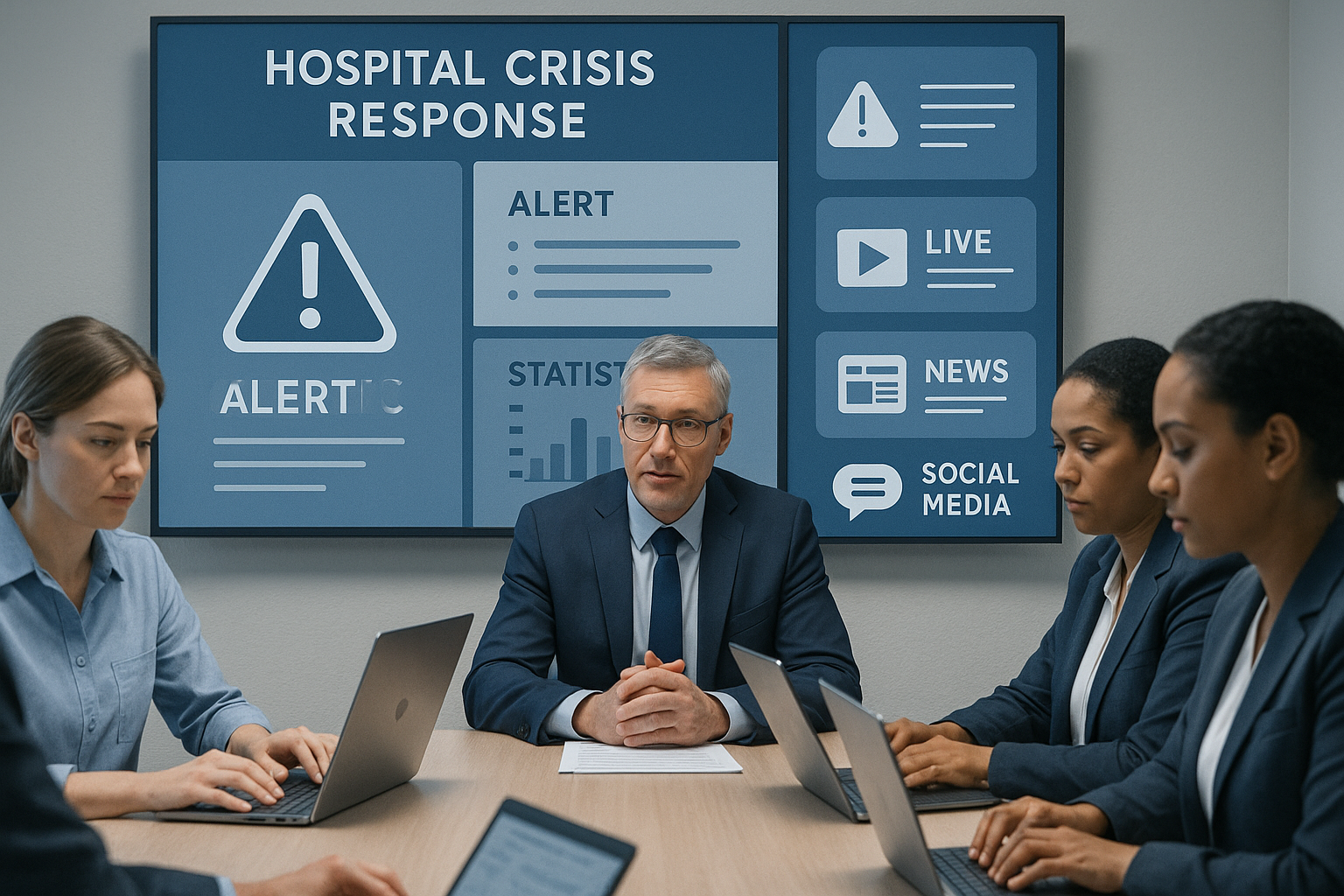Your digital health app solves a real problem. The technology works. The user experience is polished. Clinical validation confirms it delivers results. But there’s a gap—a crucial gap between a potential user discovering your app and actually becoming an engaged, long-term user who experiences its full value.
This gap exists because digital health solutions require something most consumer apps don’t: behavioral change. Whether it’s tracking medications, logging symptoms, completing workouts, or practicing meditation, your users must develop new habits and integrate your app into their daily health routines. This requires more than flashy advertising—it requires education, trust-building, and continuous value demonstration.
76% of consumers are actively seeking digital solutions to support their wellness journeys, creating unprecedented opportunity. But wellness apps providing robust educational content experience 67% higher user engagement than those focusing solely on app features. The difference between success and failure often comes down to content strategy.
This comprehensive guide explores how to leverage content at every stage of the user journey—from initial awareness through conversion, onboarding, engagement, and ultimately, advocacy—turning curious prospects into educated, committed users who achieve meaningful health outcomes with your digital solution.
Understanding the Digital Health Content Challenge
Before diving into strategies, we must acknowledge why content marketing for digital health apps differs from other categories.
The Complexity of Healthcare Decision-Making
Unlike ordering takeout or streaming music, healthcare decisions carry real consequences. Users approach digital health solutions with understandable caution, skepticism, and questions. 77% of people search for information during their patient journey, reflecting the research-intensive nature of health-related decisions.
Your content must address:
- Efficacy concerns: Does this actually work?
- Privacy anxieties: Can I trust this with my health data?
- Behavioral feasibility: Can I realistically use this consistently?
- Value justification: Is this worth my time and/or money?
- Scientific credibility: Is this backed by real evidence?
The Education-to-Action Gap
Many potential users understand they need health improvement but don’t know where to start or how digital solutions fit into their lives. 70% of people influenced by online health information change their treatment decisions, demonstrating content’s power—but also the responsibility that comes with it.
Your content must bridge knowledge gaps while maintaining scientific accuracy, simplify complex concepts without oversimplifying, and inspire action while setting realistic expectations.
The Behavioral Change Imperative
Heart failure patients who received education were 23% less likely to be readmitted to the hospital within a month than those who didn’t. Education directly impacts health outcomes—and user retention.
Digital health success requires sustained behavioral change, not one-time actions. Content must support users through the difficult work of habit formation, providing encouragement during setbacks, celebrating progress, and continuously reinforcing value.
The Full-Funnel Content Strategy for Digital Health
The healthcare marketing funnel consists of four key stages: Awareness, Consideration, Conversion, and Retention. Each stage requires distinct content approaches tailored to where users are in their journey.
Stage 1: Awareness—Capturing Attention Through Education
At the awareness stage, potential users recognize a health challenge but may not know solutions exist. Your content must educate about the problem, introduce your category, and position digital solutions as viable options.
Content Types for Awareness:
Educational Blog Posts: Address common health questions and concerns. When you are going after national search rankings, educational material is your friend and ally to drive major search traffic volume to your website.
Example topics:
- “10 Signs of Poor Sleep Quality (And What to Do About It)”
- “Understanding Type 2 Diabetes: Beyond the Basics”
- “Why Traditional Dieting Fails: The Science of Sustainable Weight Loss”
Short-Form Video Education: Create bite-sized videos that simplify complex topics, from wellness tips to treatment overviews. Videos work especially well on social media for top-of-funnel awareness.
Infographics: Visual content explaining health statistics, processes, or symptoms helps users quickly understand complex topics while being highly shareable.
Social Media Content: Share bite-sized health tips, myth-busting facts, and relatable health struggles that resonate with your target audience.
Guest Contributions: Get a doctor in front of the camera and let them give advice on how-to’s, educational pieces, FAQs. Expert credibility builds awareness and trust simultaneously.
Best Practices:
- Focus on the problem and pain points, not your solution yet
- Use SEO optimization targeting high-volume informational keywords
- Make content accessible to non-experts using plain language
- Cite credible sources to build authority
- Include subtle calls-to-action directing to consideration-stage content
Stage 2: Consideration—Building Trust and Demonstrating Value
Users now understand their challenge and are evaluating solutions. They’re comparing your app to alternatives (including doing nothing). Your content must build trust, demonstrate credibility, and show why your specific approach works.
Content Types for Consideration:
Detailed How-It-Works Content: Explain your methodology, technology, or approach in depth. What makes your solution different and effective?
Clinical Evidence and Research: Stanford Digital Health researchers found that wellness apps providing robust educational content experience 67% higher user engagement. Share studies, clinical validation, and scientific backing.
Expert Interviews: Feature healthcare professionals explaining why they recommend your approach. Their credibility transfers to your brand.
User Success Stories: Showcase user transformation stories demonstrating real people achieving real results (with proper authorization and HIPAA compliance).
Comparison Content: Honest comparisons with alternatives (other apps, traditional approaches, doing nothing) help users understand your unique value.
Webinars and Live Q&A: Host live Q&A sessions or educational webinars where experts address concerns directly, building trust through transparency and expertise.
Free Trials and Demos: Let users experience your app before committing. Content explaining how to maximize trial periods ensures they see value.
Best Practices:
- Balance promotion with genuine education
- Address common objections and concerns directly
- Use data and evidence to support claims
- Show, don’t just tell—use screenshots, videos, and walkthroughs
- Provide comparison frameworks that help decision-making
Stage 3: Conversion—Removing Friction and Inspiring Action
Users are ready to try your solution but may have final hesitations. Your content must remove remaining obstacles, simplify the getting-started process, and create urgency (without pressure).
Content Types for Conversion:
Onboarding Guides: Pre-download content explaining what to expect, how to get started, and what success looks like reduces post-download abandonment.
FAQ Pages: Comprehensively address common questions about pricing, privacy, data security, time commitment, and technical requirements.
Privacy and Security Content: Detailed explanations of data protection, HIPAA compliance, and security measures address the privacy concerns especially prominent in healthcare.
Quick-Start Tutorials: Short videos or guides showing the first steps users should take after downloading increase activation rates.
Testimonial Videos: Video testimonials are especially powerful at conversion stage, showing real people making the decision to try your app and explaining why.
Free Trial or Money-Back Guarantees: Content explaining risk-free trials removes financial hesitation.
Best Practices:
- Reduce cognitive load—make the decision simple
- Address privacy and security concerns explicitly
- Set realistic expectations about time investment and results
- Provide social proof from people like your target users
- Create urgency appropriately (limited offers, seasonal relevance)
- Optimize landing pages for single, clear conversion actions
Stage 4: Onboarding—Educating Users for Success
The period immediately after download is critical. If the users within the organization don’t engage with your software because they find it too cumbersome or confusing, you lose an opportunity to satisfy them. Strong onboarding content drives activation and sets the foundation for long-term engagement.
Content Types for Onboarding:
Welcome Sequences: Value-focused welcome sequences introducing key features while emphasizing immediate benefits that encourage initial app exploration.
Step-by-Step Tutorials: In-app guides, video tutorials, or interactive walkthroughs teaching users how to use core features.
Goal-Setting Content: Help users define personal health goals and understand how your app supports achieving them.
Progress Tracking Education: Teach users how to track their progress, interpret data, and celebrate milestones.
First-Week Challenges: Structured challenges or programs guide new users through their first week, building habit momentum.
Troubleshooting Guides: Proactively address common setup issues, technical questions, or confusion points.
Best Practices:
- Focus on time-to-value—help users experience benefits quickly
- Segment onboarding based on user goals or experience levels
- Use progressive disclosure—don’t overwhelm with everything at once
- Celebrate small wins to build confidence and motivation
- Onboarding emails should guide users through critical setup steps and first wellness activities, with behavioral triggers addressing common drop-off points
Stage 5: Engagement—Sustaining Usage Through Continuous Education
After initial activation, users must develop habits around your app. Content keeps users engaged, educates about advanced features, and maintains motivation during the difficult middle period when novelty fades.
Content Types for Engagement:
Weekly Health Tips: Regular email or in-app content providing health education relevant to users’ goals maintains touchpoints.
Feature Spotlights: Introduce users to features they haven’t discovered yet, expanding their use of your app.
Progress Reports: Automated summaries showing user progress, trends, and achievements reinforce value and encourage continued use.
Challenge Programs: Engagement campaigns might include weekly wellness challenges, creating structure and community around app usage.
Expert Content: Ongoing educational content from health professionals, researchers, or trainers provides continuous value beyond app functionality.
Community Content: User-generated content, forums, or shared experiences create connection and accountability.
Seasonal Content: Health content tied to seasons, holidays, or life events maintains relevance.
Best Practices:
- Personalize content based on user behavior and goals
- Use behavioral triggers—send content when users show disengagement signals
- Balance education with entertainment and inspiration
- Create content series that build on each other
- Test timing and frequency—avoid overwhelming users
Stage 6: Retention—Deepening Relationships and Preventing Churn
Out of all of the stages, retention may be most crucial. Content at this stage deepens user commitment, addresses potential churn signals, and reinforces long-term value.
Content Types for Retention:
Advanced Guides: As users become proficient, provide advanced strategies, optimization tips, or expert-level content that maintains challenge and growth.
Success Milestone Content: Celebrate major achievements (30 days, 6 months, 1 year) with special content recognizing their commitment.
Re-engagement Campaigns: When usage declines, targeted content addresses why users stop engaging and provides pathways back.
Outcome Research: Share data showing long-term outcomes from sustained app usage, reinforcing the value of continued engagement.
New Feature Announcements: Keep long-term users excited with content about new capabilities, showing your commitment to continuous improvement.
Win-Back Content: For lapsed users, targeted content addresses common reasons for abandonment and offers incentives to return.
Best Practices:
- Identify churn signals early and intervene with targeted content
- Show cumulative value—what users have achieved over time
- Refresh content regularly to avoid staleness for long-term users
- Segment retention content by user tenure and engagement level
- Combine automated sequences with personalized outreach
Stage 7: Advocacy—Turning Users into Champions
Satisfied, successful users become your best marketers. Content can activate and amplify advocacy, creating growth flywheels.
Content Types for Advocacy:
Referral Program Content: Explain referral programs, make sharing easy, and provide pre-written content users can share.
User Spotlight Features: Showcase user transformation stories, celebrating successes (with permission) and inspiring both advocates and prospects.
Review Request Campaigns: Strategic requests for App Store reviews with clear instructions make it easy for satisfied users to advocate.
Social Sharing Tools: Provide shareable achievements, infographics of progress, or milestone badges users can post to social media.
Ambassador Programs: Formal programs empowering top users to create content, lead communities, or represent your brand.
Best Practices:
- Make advocacy effortless—provide templates, images, and shareable content
- Recognize and reward advocates publicly
- Ensure sharing maintains privacy—never share health data without explicit consent
- Target advocacy requests to highly satisfied users based on engagement data
- Create mutual value—advocacy should benefit both you and the advocate
Content Formats That Work for Digital Health
Beyond strategy, choosing the right formats maximizes impact. Different formats serve different purposes and audiences.
Video Content: The Dominant Format
Video continues to dominate digital platforms, and healthcare marketing is no exception. Creating long-form tutorial videos that address common issues, or reaching potential patients on informal platforms increases engagement dramatically.
Types of Health App Videos:
Explainer Videos (60-90 seconds): Quickly communicate what your app does and why it matters. Perfect for paid advertising and top-of-funnel awareness.
Feature Tutorials (2-5 minutes): Teach specific functionality in detail. Essential for onboarding and engagement.
Expert Interviews (5-15 minutes): Build credibility through healthcare professional endorsements and explanations.
User Testimonials (1-3 minutes): Authentic stories from real users demonstrating results and building trust.
Live Sessions: Live streaming for health education: To build trust and answer potential patients’ questions, host live Q&A sessions or educational webinars.
Short-Form Social Videos (15-60 seconds): In 2025, short-form video has become one of the most effective content formats in healthcare. Perfect for TikTok, Instagram Reels, and YouTube Shorts.
Written Content: The SEO Foundation
72% of healthcare marketers prioritize content creation as the most effective SEO approach. Blog content drives organic discovery and establishes thought leadership.
Blog Post Types:
- Educational “how-to” guides
- Condition/symptom explainers
- Research and study summaries
- Myth-busting articles
- Comparison posts
- Expert roundups
- Success story features
Long-Form Content:
- Comprehensive guides (2,000+ words)
- E-books and downloadable resources
- White papers with clinical evidence
- Annual reports on user outcomes
Email Marketing: Direct, Personal Communication
Email marketing remains one of the most effective ways to engage wellness consumers. The average open rate for emails related to medical, dental, and healthcare is 44.60%.
Email Series That Work:
- Welcome sequences for new users
- Weekly health tip newsletters
- Feature spotlight campaigns
- Re-engagement series for inactive users
- Milestone celebration emails
- Personalized progress reports
Use email segmentation to target specific groups based on their interests or behaviors.
Interactive Content: Hands-On Education
Interactive content drives engagement by requiring active participation rather than passive consumption.
Interactive Formats:
- Health assessments and quizzes
- Symptom checkers
- Goal-setting tools
- Progress calculators
- ROI estimators (time saved, outcomes achieved)
- Interactive infographics
- Virtual tours of app features
Community Content: Peer Connection
User-generated content and community features create connection and accountability.
Community Content Types:
- User forums or discussion boards
- Social media groups
- Challenge leaderboards
- Shared progress posts
- Peer support networks
- Expert AMAs (Ask Me Anything)
Measuring Content Effectiveness
To truly drive performance, your SaaS healthcare marketing strategy needs to address all seven stages of the funnel. Measurement ensures content investments generate returns.
Awareness Stage Metrics
- Website traffic from organic search and social
- Content engagement: Time on page, scroll depth, video completion
- Social shares and virality indicators
- Brand search volume growth
- Email list growth from content opt-ins
Consideration Stage Metrics
- Content downloads (ebooks, guides, resources)
- Webinar registrations and attendance
- Video view rates for longer-form educational content
- Comparison page views and time spent
- Return visitor rate—users coming back for more information
Conversion Stage Metrics
- Landing page conversion rate for download CTAs
- App store listing views from content referrals
- Install rate from content touchpoints
- Cost per install for content-driven channels
- Attribution of installs to specific content pieces
Onboarding Stage Metrics
- Activation rate: Percentage completing key onboarding steps
- Time-to-value: How quickly users experience core benefits
- Feature adoption: Percentage using essential features
- Onboarding completion rate
- Day 1 retention: Users returning after first session
Engagement Stage Metrics
- Daily/Weekly/Monthly Active Users (DAU/WAU/MAU)
- Session frequency and duration
- Content consumption: Email opens, in-app content engagement
- Feature usage depth: How many features users actively use
- 7-day and 30-day retention rates
Retention Stage Metrics
- Churn rate: Percentage of users who stop using app
- Customer Lifetime Value (LTV)
- Net Promoter Score (NPS)
- Reactivation rate for lapsed users
- Long-term cohort retention (90-day, 180-day, 1-year)
Advocacy Stage Metrics
- Referral rate: Percentage of users who refer others
- Virality coefficient: How many new users each user brings
- Review generation: App store reviews submitted
- Social mentions and user-generated content volume
- Ambassador program participation
Real-World Success: Content Marketing in Action
Theory means nothing without demonstrated results. Several digital health companies have achieved remarkable success through strategic content marketing.
Case Study: Aetna’s Personalized Video Strategy
Aetna implemented personalized video experiences at key moments throughout the member journey, including health plan comparisons, onboarding, and benefits education. The results? Aetna saw a significant lift in Net Promoter Score (NPS) as well as incremental value in cost savings per video view, measured by fewer calls into the call center by viewers and lower medical costs from fewer out-of-network visits, fewer emergency room visits, and more enrollments for chronic care management programs.
This demonstrates how educational content doesn’t just drive engagement—it improves health outcomes and reduces costs.
The Power of Educational Blogging
Take a look at disruptors from recent years and you will find that they have adopted an incredibly effective blog education content strategy. Check out Roman the men’s health company. Almost all of the major traffic generators to the website are information-based articles and blogs.
By creating comprehensive educational content around sensitive health topics, Roman built trust, drove organic traffic, and converted educated visitors into customers at scale.
MINDBODY’s Feature-Focused Content
This shows how content highlighting specific app features drives measurable behavioral change and revenue impact.
Building Your Digital Health Content Machine
Creating consistent, high-quality content requires systems, not just inspiration.
Content Strategy Development
- Audit Current State: What content exists? What performs well? What’s missing?
- Define Audience Segments: Create detailed personas representing different user types, goals, and needs.
- Map Content to Journey: Identify what content each segment needs at each funnel stage.
- Develop Content Pillars: Choose 3-5 core themes that organize all your content.
- Create Editorial Calendar: Plan 3-6 months of content production and distribution.
Content Production Workflow
- Research and ideation based on user questions, search data, and health trends
- Subject matter expert review ensuring medical accuracy
- Content creation by skilled health writers and designers
- Compliance review for HIPAA and regulatory compliance
- Optimization for SEO, accessibility, and platform requirements
- Distribution across owned, earned, and paid channels
- Promotion through email, social, and in-app placements
- Measurement and optimization based on performance data
Building a Sustainable Content Team
Options for content production:
In-House Team: Hire dedicated content creators, health writers, video producers, and designers. Best for companies with scale and resources.
Hybrid Approach: Core team supported by freelance specialists for specific content types or subject areas.
Agency Partnership: Healthcare marketing agencies provide comprehensive content services with healthcare expertise.
User-Generated Content: Leverage satisfied users to create testimonials, reviews, and community content (with proper permissions and oversight).
The Future of Digital Health Content
As technology and consumer expectations evolve, so must content strategies.
AI-Powered Personalization
Generative AI is revolutionizing content production, enabling fast and scalable creation of everything from FAQs to onboarding emails. Meanwhile, chatbots are becoming more intelligent and empathetic, providing valuable assistance to users as they navigate plan options.
Future content will be increasingly personalized, with AI tailoring messages, timing, and format to individual user preferences, behaviors, and needs.
Immersive Experiences
As AR and VR become more accessible, digital health apps will offer immersive educational experiences that go far beyond text and video.
Voice and Conversational Interfaces
Voice-activated health assistants and conversational AI will create new content modalities, requiring optimization for natural language and voice queries.
Predictive Content Delivery
Leverage AI to anticipate patient needs based on behavior and history. Systems will predict when users need encouragement, education, or intervention—delivering content proactively rather than waiting for users to seek it.
Conclusion: Content as the Bridge to Health Transformation
Digital health apps promise to democratize healthcare access, empower individuals with health data and insights, and support behavioral changes that improve lives. But these promises remain unfulfilled if users don’t understand, trust, or consistently engage with these solutions.
Content is the bridge. It transforms complex health concepts into accessible knowledge. It builds the trust necessary for users to share sensitive health data. It guides users through difficult behavioral changes. It celebrates successes and provides support during setbacks. It turns one-time downloads into sustained engagement and meaningful health outcomes.
76% of consumers are actively seeking digital solutions to support their wellness journeys, but wellness apps providing robust educational content experience 67% higher user engagement. The difference isn’t the technology—it’s the education, support, and continuous value delivery that content provides.
Your app has the potential to improve thousands or millions of lives. Strategic content marketing is what transforms that potential into reality, one educated, empowered, engaged user at a time.
The journey from awareness to advocacy is long, but with content guiding the way, it’s a journey users can successfully navigate—achieving their health goals while building your sustainable growth.
Ready to develop a content strategy that educates and converts digital health users? Our team specializes in healthcare content marketing, combining medical expertise with proven marketing strategies. From content strategy development and production to distribution and optimization, we help digital health apps build engagement, drive conversions, and improve user outcomes. Contact us today for a complimentary content audit and discover how strategic content can accelerate your growth.
References
- Callin. (2025). “Marketing Strategies for Wellness Apps in 2025.” Retrieved from https://callin.io/marketing-strategies-for-wellness-apps/
- Big Sea. (2025). “Top Healthcare Digital Marketing Trends in 2025.” Retrieved from https://bigsea.co/ideas/healthcare-digital-marketing/
- Promodo. (2024). “Healthcare Digital Marketing Benchmarks 2025.” Retrieved from https://www.promodo.com/blog/healthcare-digital-marketing-benchmarks-2024
- SundaySky. (2025). “2025 Healthcare Marketing Strategy: Trends You Need to Know.” Retrieved from https://sundaysky.com/blog/2025-healthcare-marketing-trends/
- Choose Oxygen. (2025). “2025 Digital Marketing Trends to Watch for in the Healthcare Industry.” Retrieved from https://www.chooseoxygen.com/en/blog/healthcare-digital-trends-2025
- McKinsey. (2024). “Health Media: How Consumer Content Informs the Future of Healthcare.” Retrieved from https://www.mckinsey.com/industries/healthcare/our-insights/health-media-how-consumer-content-informs-the-future-of-healthcare
- Intrepy. (2025). “9 Biggest Healthcare Marketing Trends in 2025 with Examples.” Retrieved from https://intrepy.com/9-biggest-trends-in-healthcare-marketing-in-2023/
- NinjaPromo. (2025). “Healthcare Digital Marketing: Best Strategies for Medical Companies.” Retrieved from https://ninjapromo.io/the-complete-guide-to-digital-marketing-for-healthcare
- SoCalNewsGroup. (2025). “Wellness Marketing Guide 2025.” Retrieved from https://www.socalnewsgroup.com/2025/02/15/wellness-marketing-guide-2025/
- Medium. (2025). “Digital Healthcare Marketing: Empowering Patient Connections.” Retrieved from https://medium.com/@mellowqueen79/digital-healthcare-marketing-empowering-patient-connections-in-fcdd615696a4
- The Spot On Agency. (2025). “The 7 Stages of the Healthcare SaaS Marketing Funnel.” Retrieved from https://www.thespotonagency.com/blog/the-seven-stages-saas-marketing-funnel
- DataDab. (2025). “The Ultimate Guide to SaaS User Onboarding: Best Practices, Examples & Strategies for Retention.” Retrieved from https://www.datadab.com/blog/the-ultimate-guide-to-saas-user-onboarding-best-practices-examples-strategies-for-retention/
- Zigpoll. “How Can We Leverage Funnel Analysis and Cohort Segmentation to Identify Critical Drop-Off Points During User Onboarding.” Retrieved from https://www.zigpoll.com/content/how-can-we-leverage-funnel-analysis-and-cohort-segmentation-to-identify-critical-dropoff-points-during-the-user-onboarding-process-and-improve-overall-user-retention-rates
- Healthy Ads. (2024). “How To Build A Full-Funnel Healthcare Marketing Strategy.” Retrieved from https://www.healthyads.com/articles/how-to-build-a-full-funnel-healthcare-marketing-strategy/
- UserGuiding. “4 Steps to Build a Thorough User Onboarding Funnel for Your Product.” Retrieved from https://userguiding.com/blog/user-onboarding-funnel
- Whatfix. (2025). “12 Must-Track User Onboarding Metrics & KPIs (2025).” Retrieved from https://whatfix.com/blog/user-onboarding-metrics/
- ClearVoice. (2025). “Funnel Vision: Content Marketing Strategies That Create Engaging Healthcare Experiences.” Retrieved from https://www.clearvoice.com/resources/health-care-marketing-funnels-content/
- UXCam. (2024). “How to Build an Effective Product Funnel.” Retrieved from https://uxcam.com/blog/product-funnel/
- WebMD Ignite. “6 Must-Know Healthcare Marketing Metrics to Prove ROI.” Retrieved from https://webmdignite.com/blog/6-must-know-healthcare-marketing-metrics-prove-roi
- Exposure Ninja. (2025). “Digital Marketing Strategy for Healthcare: 2026 Guide.” Retrieved from https://exposureninja.com/blog/digital-marketing-strategy-for-healthcare/




